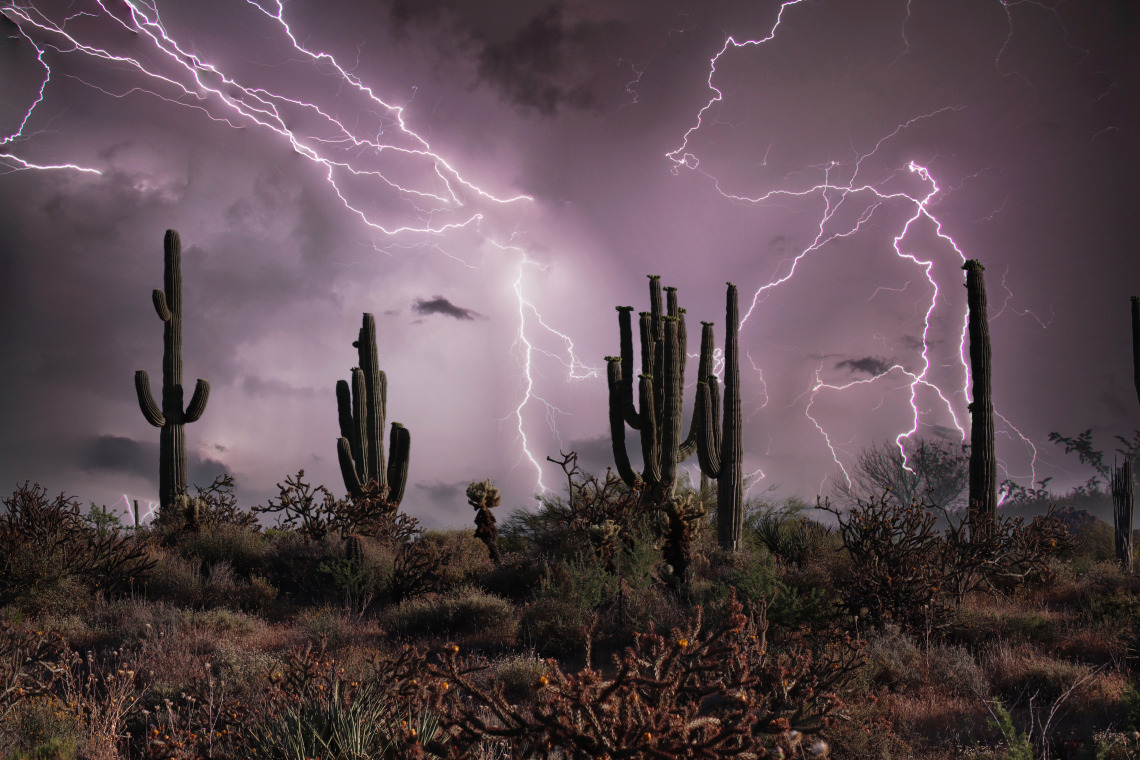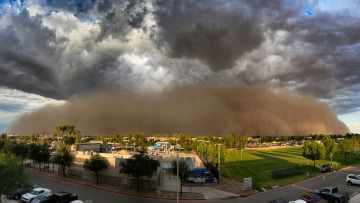When Will it Rain at Your House? Cooperative Extension Science Can Help Find the Answer
Data collected and parsed by University of Arizona scientists helps paint a picture of when – or if – monsoon rain will come to your part of Arizona.

Many parts of southern Arizona get half of their annual rainfall from June – September. Thunderstorms with heavy rainfall and frequent lightning sweep across the desert, leaving an explosion of life in their wake.
Though the monsoon has begun, figuring out when, where, and how much it’s going to rain is a difficult task. But we all still want to know – When will it rain at my house?
It’s a hard question to answer, because the monsoon is a complicated dance among atmospheric circulation patterns, Pacific Ocean surface temperatures, snowpack, soil moisture across the West, and other factors. Science can give us some hints, however.

Dust storms raised by monsoon wind are a dangerous byproduct of Arizona's annual rainy season.
“Forecasting monsoon precipitation is really tricky,” said University of Arizona Cooperative Extension Specialist and Environmental Science Professor Mike Crimmins, Ph.D.
“We have to look at how general weather patterns may set up for the early and late parts of the season. This year, we are keeping an eye on a quickly developing El Nino. This may delay the onset of the monsoon across all of the Southwest this year.”
El Nino is a climate pattern that pushes warm surface water in the Pacific toward the Americas, pulling the Pacific jet stream to the south and affecting weather across the U.S. Southwest. The National Weather Service 2023 monsoon outlook is a mixed bag of probabilities.
The NWS forecasts that precipitation in eastern and central Arizona (Tucson, Phoenix, Nogales, Douglas, and Flagstaff) will lean slightly below normal, while western parts of the state (Lake Havasu, Kingman, and Yuma) have equal chances of normal, below normal, and above normal rainfall.
The National Oceanographic and Atmospheric Administration predicts below average rainfall from July through September for most of the state.
Above normal winter rainfall has pulled most of Arizona out of short-term drought conditions. As of June 8, only the far northwestern and western parts of the state were showing abnormally dry or moderate drought, according to the U.S. Drought Monitor.
The start of monsoon could be slow, the NWS said in a seasonal outlook video.
“With above normal winter precipitation and now wet soil moisture over the Four Corners region, we could see a sluggish start to the monsoon circulation,” NWS reported.
NOAA sees a clearer picture where temperatures are concerned, calling for a 70 percent chance of above normal temperatures across the state during monsoon.
Prepare yourself for monsoon with University of Arizona Cooperative Extension climate research and data on our new monsoon page.
